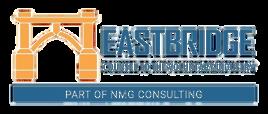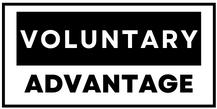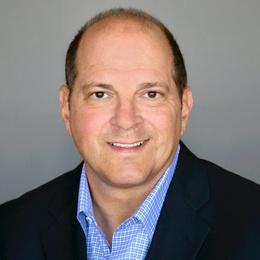M A G A Z I N E








Jennifer Daniel Aflac

Jack Holder EBIS

Rachel McCarter Mercer

Mark Rosenthal PwC


Steve Clabaugh CLU, ChFC
Editors
Heather Garbers | Trevor Garbers
Marketing Director
Marin Daniel
For Media and Marketing Requests Contact:
Heather@voluntary-advantage.com
Trevor@voluntary-advantage.com
Mailing Address
10940 S Parker Rd #257 Parker, Colorado 80134

Seif Saghri BenefitHub


Tim Schnoor Birch Benefits
Sydney Consulting Group A d v i s o r y B o a r d

Hunter Sexton, JD, MHA

Michael Stachowiak

Menopause Is Hot: Why This Unaddressed Gap In Women’s Healthcare Is Setting The Benefits World On Fire Too High Of A Price: The Soaring Cost of Cancer Care
Workforce Mental Health
4 Best Practices For A Successful Open Enrollment
Relational Leadership: When Something Goes Wrong



As an industry, can we stop treating Voluntary / Workplace Benefits like an after-thought?
After you work in this industry for a while, you learn the value that these plans can provide to the members These plans can truly be life changing and lifesaving, but we still treat them like an afterthought
We recommend the vendor with the cheapest rate
We recommend the vendor with the highest override, highest heaped commission, or highest marketing fee
We move the business every 2-3 years for more first year heaped commissions
We recommend the vendor that is already in place without market analysis for other lines because “it is easy”
We recommend the solution that refunds hard earned employee dollars to the employer, because how could they say no?

We don’t take the time to look at the policy spec to see where the loopholes are for denied claims We don’t take the time to explore the vendor’s claims processes to see the member experience Some of us don’t even take the time to negotiate plan designs to ensure that we are recommending plans that actually have value at an affordable rate We don’t look at these plans from the member’s perspective, we look at them from the perspective of what is best for “me” and that is something we need to address in our industry
I had the opportunity to attend an industry conference recently and during a panel discussion, when asked “Are you worried about the impact of decreasing premiums and the push to drive claims utilization?”, the head of product at a carrier replied, “No, I’m more worried about reporting earnings to my bosses, so we do not even have medical claims integration on our roadmap”.
Why when given the opportunity to change someone’s life for the better, do we treat our clients and policyholders like an afterthought?
What if you were that member? Who would you choose to be your trusted advisor?




Nick Rockwell President Danielle Lehman Senior Consultant
Eastbridge is the source for research, experience, and advice for companies competing in the voluntary space and for those wishing to enter For over 25 years, they have built the industry’s leading data warehouse and industry-specific consulting practice Today, 20 of the 25 largest voluntary/worksite carriers are both consulting and research clients of Eastbridge.


VoluntaryAdvantagehaspartneredwithNABIPtoupdatetheirVoluntary/WorksiteCertificationand itisliveandavailabletoyou24/7virtually.
ThecostoftheVoluntary/WorksiteCertificationcourseis$304.70forNABIPmembersand$401.50fornonmembers,whichincludesonlineinstructioninthreeone-hourwebinarmodules,afinalexamand continuingeducationcredits.Uponcompletion,youwillreceiveacertificateofcompletionas voluntary/worksitecertified.
CourseHighlights:
Mastertheproductwithinnovativesolutions
Understandcontractdifferences
Reviewimplementationandadministration
Obtaincrucialcomplianceinsights


By John Allen
In today’s competitive job market, employee wellbeing is more than a buzzword - it is a fundamental aspect of maintaining a productive, engaged, and loyal workforce Companies are recognizing that supporting their employees’ wellbeing through comprehensive benefits packages not only increases morale but also improves overall performance. Employee benefits are no longer confined to basic salary and healthcare; they have expanded to encompass a broad range of benefits that have a direct impact on employees’ mental, physical, and financial wellbeing.
This article explores how employee benefits can help promote wellbeing and in turn foster a healthier, happier, and more productive workforce
Health insurance is the most basic form of an employee benefit package Forward-thinking companies are going beyond basic health insurance plans and are now offering wellness benefits, such as: gym memberships and onsite fitness facilities These programs directly contribute to an employee’s physical health, reducing stress and fostering better work-life balance
Preventive healthcare, such as biometric screenings, flu shots, and access to dietitians, empowers employees to prioritize their health before problems arise. Additionally, flexible sick leave policies and telemedicine services allow employees to address health issues without disrupting their work, promoting overall productivity.
The increasing awareness of mental health challenges has prompted companies to offer more comprehensive mental health support as part of their benefits packages Mental wellbeing is as important as physical health, and benefits like Employee Assistance Programs (EAPs) and access to counseling services have become essential.
EAPs provide confidential support for personal or work-related problems, including anxiety, depression, and family issues. Some organizations go a step further by offering mental health days, mindfulness workshops, and subscriptions to wellness apps like Calm or Headspace By normalizing the conversation around mental health and offering resources, employers can significantly reduce the stigma and help employees feel supported in managing stress and avoiding burnout
Financial stress is a leading cause of anxiety Employers who offer benefits that address financial wellness create a supportive environment that reduces this burden
Financial wellness benefits can include retirement savings plans like 401(k) matching, financial literacy workshops, debt counseling, and assistance with student loan repayments
By promoting long-term financial security, companies help employees focus on their work without the distraction of financial concerns. Additionally, perks like commuter benefits, discounts on childcare, or stipends for remote work setup can further ease financial burdens, leading to a more engaged workforce.
Remote and hybrid work models have driven the re-evaluation of work-life balance Flexible working arrangements, including options for remote work, flexible hours, and compressed workweeks, have become desirable benefits that improve employees' quality of life. Flexible work arrangements empower employees to manage their personal responsibilities thereby reducing stress and increasing productivity.
Parental leave policies are another crucial aspect of supporting work-life balance. Generous maternity and paternity leave, as well as flexible return-to- work programs, demonstrate a company’s commitment to employees’ personal lives and family wellbeing
Career development opportunities are another often-overlooked benefit that significantly impacts employee wellbeing Offering employees growth opportunities through training programs, certifications, or mentorship helps them feel valued and enhances their sense of purpose at work
Employees who feel they have a clear path for growth within the company are more motivated, reducing feelings of stagnation and frustration Access to educational stipends or tuition reimbursement further supports personal and professional development, leading to a happier, more engaged workforce.
According to the American Psychological Association, 76% of U.S. workers, consider mental health benefits like Employee Assistance Programs (EAPs) to be important when deciding on an employer
Diversity, equity, and inclusion (DEI) initiatives are essential for creating a sense of belonging in the workplace Employee benefits that cater to diverse groups, such as LGBTQ+ support, fertility assistance, adoption aid, or cultural holidays, ensure that everyone feels recognized and supported.
Inclusive benefits help foster an environment where all employees feel valued, which is key to creating a positive organizational culture. Companies that take the time to offer benefits tailored to their diverse workforce will build a sense of belonging that strengthens employee loyalty and community
In today’s dynamic work environment, employee wellbeing is inseparably linked to organizational success Offering a robust and diverse range of benefits helps employers attract and retain top talent while promoting a healthier, happier, and more productive workforce As employees increasingly prioritize their personal wellbeing, companies that adapt and expand their benefits offerings will not only boost employee morale but also strengthen their overall business performance
By investing in physical, mental, and financial wellbeing, flexible work arrangements, career development, and inclusive policies, companies create a supportive environment where employees thrive Benefits are more than just perks they are a strategic investment in the holistic wellbeing of employees and the long-term health of the organization.

John Allen, President of EOIexecutes and develops strategic marketing initiatives on a national level, specifically focusing on the enhancement of value-added services that EOI provides for its clients. Since joining EOI in 2009, John has played a key role in the area of strategic marketing, building an outstanding implementation team in the Chicago office and tripling sales in the Midwest region.
By Patrick Leary

Financial, physical, and emotional wellness challenges influence all aspects of a person’s life, including their work New LIMRA research shows that while wellness challenges are becoming more pervasive within today’s workforce, workplace benefits can play a meaningful role in helping workers address these challenges
According to LIMRA’s 2024 Financial Wellness Index™, a measure of financial health and stress, the average American worker scores just 486 (on a scale of 0 to 10) Demographically, female workers and younger workers score lower than male workers and older workers, respectively. Consequently, financial wellness is a concern for many.
Financial wellness manifests itself in a variety of wellness concerns which can have a detrimental impact on an employee’s work
The more financially stressed employees are, the more likely they are to be distracted at work by personal financial, health, and emotional worries (Table 1)
The more financially stressed employees are, the more likely they are to be distracted at work by personal financial, health, and emotional worries
1—Percent

Base: Individuals currently employed full-time, and not retired Excludes self-employed
Source: Financial Wellness Study, LIMRA, 2024
Concerningly, stress levels are increasing for many workers. According to our study, most workers report that their financial, emotional, and physical stress levels are either the same or have increased over the past 12 months (Figure 1). Fewer than 1 in 4 workers say their stress levels have decreased. Employee stress can result in high absenteeism, high turnover, increased benefits claims costs, and reduced workforce productivity As such, employers have a vested interest in improving the wellness levels of their employees Employees who are confident in their personal financial situations, able to withstand unexpected expenses, and able to plan for a financially secure future are well positioned to be engaged and productive workers Employees who score higher on the index find it easier to focus on their work, look forward to going to work each day, derive personal satisfaction from their job, and feel they have a reasonable work-life balance.

Workplace Benefits play a critical role in helping workers address the challenges and distractions they face. This can be accomplished through targeted benefits or services that address specific needs, enhancements to existing benefits, or through formal wellness programs. These programs and benefits can be provided on an employer-paid, contributory, or voluntary basis. Our research reveals the importance that workplace benefits have on employee wellbeing:
More than two-thirds of workers (69 percent) agree that the workplace benefits available to them through work are an important contributor to their financial wellness
A majority of workers feel that employers should offer services to help address employees' physical health stress (69 percent), emotional stress (68 percent), and financial stress (68 percent) 78 percent of workers feel it is important for employers to offer comprehensive insurance benefits, giving employees the option to participate, even if employees must pay for some or all of the benefit(s) themselves.
Over 40 percent of workers say that using the benefits offered by their employer has reduced their financial stress (45 percent), emotional stress (42 percent) and physical stress (43 percent)
These findings support the value that workers place in having benefits available to them at work, and the important role they play in improving their wellbeing It is in employers’ best interest to provide services and support to help employees improve their financial wellness Positioning traditional and emerging voluntary benefits within a more holistic narrative addressing wellness needs can open new conversations around voluntary benefits and how they fit into broader wellness strategies
Figure 1 - Change in Workforce Stress Levels Over the Past 12 Months By Type of Stress (percent of workers)


Base: Individuals currently employed full-time, and not retired. Excludes self-employed.
Source: Financial Wellness Study, LIMRA, 2024
- senior research professional and leader focused on workforce benefits Pat’s team helps organizations develop and enhance their workforce benefits strategies by leveraging research-based insights


By Joanna Strober, Founder and CEO, Midi Health
There’s lots of buzz about menopause lately, largely because women are more invested in their wellness than ever. They are seeking help for sleep troubles, brain fog, and other menopause-related issues, but coming up empty because most practitioners have limited training in the hormonal changes of midlife
They’re left with a clear message: You’re on your own And chances are, you’re just going to have to deal with your symptoms
Perimenopause is the transition time when ovaries make less and less estrogen This eventually leads to menopause itself, when a woman has not had a menstrual period for 12 consecutive months
And 80% of women say it affects not only their health and wellness, but every meaningful area of their lives.
Menopause is natural and normal, but that doesn’t mean it is easy
Women can experience any combination of more than 30 symptoms ranging from classic hot flashes, fatigue, and mood changes to lesser-known symptoms like headaches, joint pain, and memory lapses. They can start in a woman’s 40s, or sometimes earlier, and last for 7 to 14 years.
That’s a lot to deal with, for a long time, for a large number of women; around 75 million in the U.S. alone.

Addressing menopause care needs isn’t just the right thing to do for women and their loved ones It’s smart business
Menopause
Heightened risk of certain health concerns - Conditions that carry serious (and expensive) consequences, such as heart disease, diabetes, and osteoporosis, can be influenced by midlife hormonal shifts.
Overuse of health services - Women often consult 6+ doctors about their menopause symptoms before getting the right care. This can add $2,000 in additional medical costs annually and have major monetary implications for self-funded plans
Reduced attendance and productivityAlmost 60% of women say they have taken time off because of menopause symptoms Severe symptoms can result in an average of 14 days of lost productivity The cost of all this lost work? $18B a year
Retention of women in the workplaceAbout half of women say menopause has made them less likely to apply for a promotion, almost a quarter have considered quitting because of their symptoms, and 10% actually do.
Almost half of U.S. counties have no OB/GYNs. Even women in areas with these providers may have to wait several weeks to months for an appointment
63% of women say menopause negatively affects their relationships
But that’s not even the biggest issue, considering that 86% of OB/GYNs have no menopause training I’ll say that again: Practitioners who specialize in women’s reproductive health have little to no education about the hormonal changes of midlife that eventually affect every woman
Moreover, only 1 in 5 women ever get a referral to the few menopause specialists that do exist

In addition, persistent myths and misunderstandings about hormone replacement therapy (HRT) and increased risk of breast cancer continue to keep some doctors from prescribing the most effective treatment for many menopause symptoms
All of this is why giving women access to expert midlife care providers should be a focus of client health benefit offerings
Women can pay on their own, but most patients leverage their health plan.
Instead of a PEPM model, we at Midi use claims-based, in-network billing through national and most major regional plans. Patients pay a standard copay for each visit just like they do for any other provider on their plan and their deductible.
“This is a health equity issue. Women aren’t getting the right care for their menopause symptoms and are getting derailed right at the height of their careers. But this is something that absolutely can be addressed.”
—Joanna Strober, Founder and CEO, Midi Health


According to Mercer, the number of large organizations offering/planning to offer specialized menopause benefits jumped from 4% in 2023 to 15% in 2024.

Specialized menopause care can be added to an insurance carrier’s existing offerings, or self- and fully-insured employers can choose to contract with outside providers like Midi directly.
Conclusion
The fact that menopause is getting talked about more is great. But what women really need is investment in an issue that eventually affects every one of them so they can achieve the level of wellness they want and deserve
Joanna Strober, Founder and CEO, Midi Health - the leading virtual care clinic focused on women navigating midlife hormonal transition. The company brings insurance-covered expert care for the symptoms of perimenopause and menopause to women nationwide A successful serial entrepreneur in the digital health space, Joanna previously served as CEO and founder of Kurbo, the first digital therapeutic for childhood obesity, which she sold to Weight Watchers
For more information on Midi, please visit joinmidicom/for-employers

By Brad Cillian
As cancer’s economic burden grows, research shows that early detection can reduce the financial impact on employers, employees and their families.
Cancer patients are confronted with an overwhelming amount of information sometimes literally about life and death No one wants to talk about money when someone’s life is on the line, but the financial burden of cancer has grown too great to ignore
The statistics are sobering: Today, annual cancer care costs in the US exceed $200 billion¹ and are increasing at a staggering rate, to a projected $246 billion by 2030² These spiraling figures impact everyone patients, for whom out-ofpocket costs have increased steadily³, and employers, who now count cancer as the top driver of both their health care costs⁴ and longterm disability claims⁵
In fact, while cancer accounts for only 1%⁶ of health insurance claims, it makes up 15%⁷ of overall employer healthcare spending. It’s also the main source of catastrophic medical claims for self-funded employers and has been every year since 2009.⁸
Cancer treatment costs are increasing at a higher rate than treatment costs for any other disease⁹ As a result, cancer has surpassed musculoskeletal diseases as the condition that is most contributing to rising employer healthcare costs:
83% of employers count cancer among their top three healthcare cost drivers, compared to 76% that count musculoskeletal conditions¹⁰
Top 2 - Cancer continues to be both the number one and two highest-cost condition among self-insured employers who buy stop-loss insurance to protect against unpredictably expensive health claims.¹¹
13% of employers said they have seen more late-stage cancers since 2021.⁴
Another 44% percent anticipate seeing such an increase in the future, likely due to pandemic-related delays in care.⁴
These growing costs are partly due to the increasing incidence of cancer as America’s population ages.¹¹ This demographic shift, however, is compounded by a steady rise in cancer diagnoses in people under age 50.¹² According to new research, rates of breast, colon, and other forms of cancer have dramatically spiked since 1990¹²
Fortunately, as more people are diagnosed with cancer, they have a growing assortment of treatment options But while oncology innovations such as genetic testing and targeted immunotherapies can be game changers, they come with large price tags In fact, the average annual price of newly launched cancer drugs in the US was $283,000 in 2021, a 53% increase from 2017¹³
Lost productivity also adds to cancer’s economic burden for individuals, families and employers. Metastatic breast cancer alone costs the U.S. more than $18 billion in lost productivity when patients are unable to work.¹⁴ Overall, patients diagnosed with late-stage cancers have significantly higher productivity losses when compared to early-stage cancers – including nearly double the number of sick days in the first year of diagnosis.¹⁵
What’s more, even after an employee finishes surgery, radiation, chemotherapy, or immunotherapy, treatment isn’t over Cancer survivors often need follow-up treatment and imaging for months or years and may encounter long-term side effects as a result of treatment that require ongoing care¹⁶
While employers might feel powerless in the face of these trends, closer analysis reveals one clear way to proactively address increasing costs: encourage screenings to promote early cancer detection Early detection can dramatically reduce cancer’s expense because cancers diagnosed at an earlier stage often require less intense, complicated and expensive treatment.¹⁵
The average cost to treat stage-1 breast cancer is about $72,000, while stage-4 costs $183,000.¹⁷ Overall, treatment for cancer that has metastasized costs employers an average of $135,799 per year,¹⁸ which can be 27 times higher than the cost of treatment for stage-1 cancer¹⁹ Collectively, early detection is associated with potential annual cost savings of $26 billion²⁰
Only four kinds of cancer— breast, colon, lung and cervical —currently have an early detection screening recommended by the U.S. Preventative Services Task Force (USPSTF).²¹ The cancer types that make up nearly three-quarters of employees’ diagnosed cancers (including some of the deadliest, like pancreatic, liver, ovarian and stomach) have none.¹⁸
And a
whopping 83% of employers’ cancer claims that exceed $100,000 are for cancers without recommended screenings.¹⁸
In addition to existing single cancer screenings, employers can also consider offering a multicancer early detection test for employees. For one such test, research shows that it can detect a cancer signal shared by more than 50 types of cancer with a simple blood draw, and modeled data suggests that early detection can create savings for both employers and employees¹⁸
Cancer screening has been shown to save lives and offer the ability to begin treatment when costs may be less burdensome By adding multi-cancer early detection tests to existing recommended screenings, both employers and employees can be more proactive in their approach to this terrible – and costly – disease
Even as companies pay skyrocketing health care costs, they’re not able to fully protect their employees from growing out-of-pocket expenses As total cost of care has grown, privately insured patients have seen their out-ofpocket costs rise 15% for all cancers – to more than $6,000 annually for breast, colorectal and lung cancer²²
This has created growing adverse financial consequences, or financial toxicity, that has lasting consequences for cancer patients and their families.²² At its worst, financial toxicity can severely compromise patients’ quality of life and lead to increased risk of bankruptcy and trouble paying for necessities.²³
Financial toxicity is a complicated problem that requires a multi-pronged response. Research shows that, in addition to financial navigation and counseling, screening practices can play a major role in reducing undue financial burden²³

Brad Cillian, Head of Employer Distribution Partnerships, GRAIL - Brad leads efforts to expand the adoption of the Galleri multicancer early detection test among employers Working with brokers, consultants, and benefit solutions, he has significantly contributed to GRAIL's growth in the US market, improving health outcomes and reducing costs for employers Before joining GRAIL, Brad was Employee Benefits Practice Leader at Lockton, a Principal at Mercer and led innovation at IMA Brad is dedicated to enhancing the health and wellbeing of employees and their families Additionally, Brad has served as a board member for the Rocky Mountain Multiple Sclerosis Center and the Private Directors Association. He holds a Bachelor's degree from Miami University's Farmer School of Business.
1 RyanD Chow,ElizabethH Bradley,CaryP Gross CostsAroundtheFirstYearofDiagnosisfor4CommonCancersAmongthePrivatelyInsured JNatlCancerInst 2022Oct6;114(10):13921399 doi:101093/jnci/djac141https://jamanetworkcom/journals/jama-health-forum/fullarticle/2792761
2 AngelaB Mariotto,LindseyEnewold,etal MedicalCareCostsAssociatedwithCancerSurvivorshipintheUnitedStates CancerEpidemiolBiomarkersPrev 2020Jul;29(7):1304-1312 doi: 101158/1055-9965EPI-19-1534 https://aacrjournalsorg/cebp/article/29/7/1304/72361/Medical-Care-Costs-Associated-with-Cancer Volume29 Issue7
3 Ya-ChenTinaShih,YingXu,etal CostsAroundtheFirstYearofDiagnosisfor4CommonCancersAmongthePrivatelyInsured JNatlCancerInst 2022Oct6;114(10):1392-1399 doi: 101093/jnci/djac141
4 CancerNowTopDriverofEmployerHealthCareCosts,SaysBusinessGroup’s2023HealthCareStrategyandPlanDesignSurvey BusinessGrouponHealth https://wwwbusinessgrouphealthorg/newsroom/news-and-press-releases/press-releases/2023-lehcspds
5 GregBreter Top10causesofdisability EmployeeBenefitNews https://wwwbenefitnewscom/slideshow/top-10-causes-of-disability
6 CancerandtheWorkplace:TheEmployerPerspective TheNortheastBusinessGrouponHealth https://nebghorg/wp-content/uploads/2015/10/CancerWorkplace FINALpdf
7 Costlyconditions:Identifyingandaddressingtopclinicalcostdrivers HealthActionCouncil,UnitedHealthGroup https://healthactioncouncilorg/getmedia/0f6eb427-7d56-4bc9-9c587475ace4d46e/2022-UHC HAC WhitePaper-Costly-Conditions FINAL page1,seechart
8 BradyMyers Trendsinthemedicalstop-lossmarket SunLife MVPRoundtable https://wwwsunlifecom/content/dam/sunlife/regional/usa/documents/mvprt-thurs-recent-trends-inthe-medical-stop-loss-marketpdf
9 SelenaGonzalesandCynthiaCox Whatarerecenttrendsincancerspendingandoutcomes?Peterson-KFF HealthSystemTracker https://wwwhealthsystemtrackerorg/chartcollection/recent-trends-cancer-spending-outcomes/#item-u-s-higher-average-disease-burden-lung-cancer 10 2023LargeEmployers’HealthCareStrategyandPlanDesignSurvey BusinessGrouponHealth https://ww2businessgrouphealthorg/acton/attachment/32043/f-7262a100-64a9-4b5296f4-37a344f9fc47/1/-/-/-/-/2023 PDS-Exec%20Summarypdf
11 AgeandCancerRisk NIH NationalCancerInstitute https://wwwcancergov/about-cancer/causes-prevention/risk/age
12 TomotakaUgai,NaokoSasamoto,etal Isearly-onsetcanceranemergingglobalepidemic?Currentevidenceandfutureimplications NatRevClinOncol 2022Oct;19(10):656-673 doi:101038/s41571-022-00672-8 https://wwwnaturecom/articles/s41571-022-00672-8
13 DeenaBeasley NewUS cancerdrugpricesrise53%infiveyears-report https://wwwreuterscom/business/healthcare-pharmaceuticals/new-us-cancer-drug-prices-rise-53-five-yearsreport-2022-11-02/
14 ConorKillmurray MetastaticBreastCancerCreatesHighEconomicBurdenThroughLostProductivity curetodaycom https://wwwcuretodaycom/view/metastatic-breast-cancercreates-high-economic-burden-through-lost-productivity
15 ZeCong,OthTran,JamesNelson,MonicaSilverandKarenChung ProductivityLossandIndirectCostsforPatientsNewlyDiagnosedwithEarly-versusLate-StageCancerintheUSA:A Large-ScaleObservationalResearchStudy https://wwwncbinlmnihgov/pmc/articles/PMC9596506/
16 Follow-UpMedicalCare NIH NationalCancerInstitute https://wwwcancergov/about-cancer/coping/survivorship/follow-up-care
17 HelenBlumen,KathrynFitch,VincentPolkus ComparisonofTreatmentCostsforBreastCancer,byTumorStageandTypeofService AmHealthDrugBenefits 2016Feb;9(1):23-32 https://wwwncbinlmnihgov/pmc/articles/PMC4822976/pdf/ahdb-09-023pdf
18 AnalysisofMarketScanclaimsdatabasecompletedbyGRAIL,LLC,July2022 DataonfileGA-2022-0085
19 NovemberMcGarvey,MatthewGitlin,ElaFadli,etal Increasedhealthcarecostsbylaterstagecancerdiagnosis BMCHealthServRes 2022;22(1):1155 doi:101186/s12913-02208457-6 https://bmchealthservresbiomedcentralcom/articles/101186/s12913-022-08457-6
20 ZuraKakushadze RakeshRaghubanshi andWillieYu EstimatingCostSavingsfromEarlyCancerDiagnosis MDPI https://wwwmdpicom/2306-5729/2/3/30
21 USPreventiveServicesTaskForceRecommendedScreenings/p2/Table"Recommendationssearchresults"/row1,2;p3/row5,6,8
22 NewStudyShowsPatientsPayingMoreOut-of-PocketCostsforCancerCare AmericanCancerSociety https://pressroomcancerorg/OutofPocketCosts para1,6
23 FinancialToxicityAssociatedWithCancerCare BackgroundandPrevalence NIH NationalCancerInstitute https://wwwcancergov/about-cancer/managing-care/track-care-costs/ financial-toxicity-hp-pdq# 1 SectionEtiologyandRisks,para5 SectionInterventionsAimedatReducingFinancialDistressAmongCancerPatients

By James Crovatto
So much has been written over the years about the importance of communication before, during and after the open enrollment process
However, as with almost anything, the devil truly lies in the details It's easy to say communication needs to improve, but putting that into action is a completely different story Just ask any broker or HR leader!
As we enter the 2024 enrollment season, I wanted to share the four best practices I’ve found to work well in more than 35 years in this industry. For this year’s enrollment, it may be a little late in the game to implement some of these strategies, but now is really the time to start thinking about and preparing for next year’s enrollment!
Preparation may be the most important part of the open enrollment process You want to start with creating an enrollment plan, including what your communication campaign will look like Once you have a plan, gaining employer buy-in on the enrollment process is critical to its success You can leverage company leadership to better understand demographics of the employee population and how to best reach them Creating the enrollment plan, communication campaign, and getting on the same page with the employer is all about advanced preparation.
As enrollment approaches, informing employees about the timing of the enrollment process and what benefits are being offered is paramount Preparing employees gives them a chance to get familiar with what they’ll be discussing so they can come ready to ask informed questions And it works! Trustmark’s research has found that employee engagement and satisfaction are both higher among employees who receive three different types of benefits communication such as emails, text messages, or postcards. You can’t just rely on the enrollment itself you have to prepare employees.
If you asked most employees to take a vocabulary test for insurance, many of them would struggle. In fact, one survey found that only seven percent of employees could define four basic health insurance concepts: plan premium, deductible, co-insurance and out-ofpocket maximum So make sure you’re educating employees to help them understand the basics! If you notice employees struggling with simple health insurance terms, you can be sure they’re struggling with others and we have a lot of terms and jargon in our industry When possible, try to speak in layman’s terms when communicating with employees about their enrollment options
Let’s be honest, in the benefits industry, we spend a lot of time looking at facts and figures We’re constantly trying to determine risk and assess how likely it is that employees will experience a health event But I can’t tell you how many times an employee looks at those stats and says, “Well, that stat doesn’t apply to me” We need to stop speaking the language of logic and start speaking the language of emotions In our research at Trustmark, we’ve found that the most common reasons employees enroll in benefits are emotional ones with “peace of mind” being the most common and “taking responsibility for my family” being the top reason for purchasing life insurance. While facts and figures have their place, conveying the value of benefits by connecting with employees personally and emotionally will take you much further.
Trustmark’s research has found that employee engagement and satisfaction are both higher among employees who receive three different types of benefits communication such as emails, text messages, or postcards.

Think about all the emails and digital communication you receive each day. What’s missing from them? Hand gestures. Tone. Body language. Personalized advice. We miss so much when we only communicate with employees electronically - it’s a one way conversation. That’s why, when possible, I advocate for some kind of one-on-one or face-to-face communication during open enrollment According to our research, 72% of employees who receive face-toface communication are satisfied or very satisfied with their employer’s benefits program Implementing one-on-one communication will help personalize your communication and create a meaningful conversation
However, since the pandemic, the tides have turned and self-serve enrollments are now more commonplace If you can’t host in-person meetings, strive for one-on-one video calls or phone appointments And if you can’t make a presentation at an employee meeting, offer a webinar with a Q&A session Just remember that the less personalized guidance you’re able to offer for enrollment, the more effective your educational communication campaign needs to be. Whether that’s through a robust email campaign, text messages, flyers, or postcards, the HR team can help you understand which communication channels work best at their company. This brings us back to the first point – you need to be prepared to meet employees where and how they gather information.
Helping employees is what a successful open enrollment process is all about They need to understand their benefits, how they fit together and what’s being offered so they can get the protection they need If they can’t understand their benefits, we’re doing something wrong So, keep these four best practices in mind when planning next year’s open enrollment My hope is they will provide a great framework for your communication with employees

Jim Crovatto, Western Regional Sales Vice President of Trustmark
Voluntary Benefits - Jim joined Trustmark in 2022 with over 36 years of experience in the insurance industry He leads and manages the western United States sales team to develop broker distribution, strategy and sales Jim has a passion for training, recruiting and leading sales teams and is based in Glen Ellyn, Illinois.
By Chris Bernardine

“Mental Health” is more than the new buzz word. Employees and employers alike rate mental health as the number 1 concern in the workplace
Issues abound in society and of course these issues carry over to the workplace In managing hundreds of thousands of incidents, there are four foundational learnings to understand as you address mental health in your organization; Employees need to know their needs are dealt with in a confidential and secure environment
1 Having an onboarding engagement program to address pre and sub-clinical issues sets up greater acceptance
3.
2 Solutions need to be simple and stress free choices so as not to complicate an already stressed situation and last, offer many access points to simplify the choices and the insights the employee gains by using the program.
Among Employees...
believe companies should support mental health culture, yet less than half feel their company prioritizes such services. [1]
Since the advent of Social Media and the acceleration of concerns brought on by the isolation of COVID, the most common issues presenting in the workplace in order of presentation are as follows:
Stress and Anxiety
Depression
Marital & Relationships
Grief
Trauma
Addressing the employees health concerns is of first priority. When all decisions are filtered by that overriding company objective, reduced employee engagement and productivity issues will resolve. Without a program, data suggests that nearly half, (498%) of participants have productivity issues losing an average 45 hours per month, and those who struggle are 67% less productive than a typical employee Mental Health matters as employees matter
A key part of your expectations is to establish a program where meaningful results will be measured and reported The key parameters of a successful program include the following:
Assure you have an onboarding program that builds trust and engagement at lower levels of concern This will address pre and sub-clinical issues and in fact go far in mitigating clinical issues from developing.
Clinical programs cannot be singular in the approach, because people are not singular. Programs need depth in both assessing and caring for your employees. Superior programs have both traditional clinical assessments and physical identification of mental health biomarkers to pair data and improve care
Provide many ways to engage with licensed professionals to meet any employee need: Effective programs include Face to face counsel, phone/video, text therapy, group sessions, psychiatric access and self guided tools
Measure resolution rates to know you are helping employees
Mental illnesses are among the most common health conditions in the United States.
More than 1 in 5 US adults live with a mental illness.
Over 1 in 5 youth (ages 1318) either currently or at some point during their life, have had a seriously debilitating mental illness. [2]
About 1 in 25 U.S. adults lives with a serious mental illness, such as schizophrenia, bipolar disorder, or major depression. [3]
In an effective “mental health” workplace solution the tenets of expectations listed above are essential including the ability to measure resolution rates. Resolution means, the combination of the counselor and the employee agree the incident being managed has been resolved and there is no further need of care.

*Persons of Hispanic origin may be of any race; all other racial/ethnic groups are non-Hispanic NH/OPI = Native Hawaiian / Other Pacific Islander | AI/AN = American Indian / Alaskan Native
Programs in market that integrate these many factors are hard to find and harder to manage A key data point to work with is the resolution rates discussed If rates exist, that is a good sign and indicates there is a program in place that can be managed Often we suggest statistical studies to prove the confidence level of the resolutions reported A “Peer Reviewed” analysis is among those with the highest confidence that you are getting what you desire, particularly if they include Longitudinal studies over time
To give you an idea, resolutions we report are:
78% of participants are resolved of anxiety concerns
87% of issues related to depression
74% related to the risk of alcohol abuse
88% resolved with issues causing a productivity concern
91% responded to a survey that their stress was effectively managed by the program
ROI becomes simpler in these scenarios, including: In an onboarding engagement program, participation is a leading indicator of claims being avoided downstream Resolution rates can be extrapolated to reduced claims as can the inverse of referral rates which delivers success measures
Using health care costs, human capital and cost savings analysis provides a payback number used in the industry Our programs deliver a 513X payback for every dollar spent

We suggest that the next step is to take action. Waiting when mental health is the foundation need results in greater clinical issues that impacts your operation. Here are some thoughts as to next steps you can begin today.
Here are some primer questions to ask yourself: Review your current program to see what might be missing and seek to fill those gaps. If you have access to claims data, determine if you have a growing claim rate for issues related to Mental Health? If you do not track that - the data is pretty clear - you do! Work with external resources such as your broker to see if they represent any programs they feel comfortable implementing and meet the needs identified within this article
Talk to your carrier, most often they will be aware of the need and a program to address the needs We know of two carriers that will pay or subsidize a program for you Find data to spur you to action Even anecdotally, your employees could be showing signs of fatigue or productivity loss that may not be monitored or measured?

Chris Bernardine, President/Chief Revenue
Officer, Unita’
- Chris has over 35 years experience in the insurance, educations, enrollment, wellness and mental health Industry
“It’s a new era for mental health at work” by Kelly Greenwood and Julia Anas, Harvard Business Review
1 Merikangas KR, He J, Burstein M, et al. Lifetime Prevalence of Mental Disorders in US Adolescents: Results from the National Comorbidity Study-Adolescent Supplement (NCS-A). Journal of the American Academy of Child and Adolescent Psychiatry. 2010;49(10):980-989. doi:10.1016/j.jaac.2010.05.017.\
3
2 Key substance use and mental health indicators in the United States: Results from the 2015 National Survey on Drug Use and Health. Rockville, MD: Center for Behavioral Health Statistics and Quality. Substance Abuse and Mental Health Services Administration. 2016.

By Steve Clabaugh, CLU, ChFC
Relational leaders demonstrate that they care for their team members as much as the organization. They create, build and lead high-performance teams that consistently achieve excellence.
It is inevitable that, at some point, no matter how great the leader, team, organization, project or plan; something will go wrong. And, if you accept the logic of “Murphy’s Law,” it generally happens at the worst possible time. An argument could be made for the idea of things actually going wrong more often than they go right. Winston Churchill, one of the greatest relational leaders in history, was once quoted as saying “Success is stumbling from failure to failure with no loss of enthusiasm ” In the process of leading a championship team, one of the greatest challenges faced by relational leaders is how they respond when something does go wrong Their response impacts the lives of their team members, the direction of their team, their own career path and, likely, the success of the overall organization
There are, of course, a variety of types and levels of the things that can and do go wrong. The types and levels of responses to such occurrences also vary based on the challenges being faced by the failure.
The good news is that relational leaders have a consistent and proven process for responding when something goes wrong It is an effective approach regardless of the size and nature of the challenge It consists of 3 important steps
Step 1, Break It Down to Rightly Size the Problem.
Step 2, Determine What You Can and Can’t Control.
Step 3, Develop a New Plan to Move Forward.
For this month, let’s consider step #1.
When confronted by something that has gone wrong some leaders start by reacting with emotion and then quickly proceed to identifying someone to blame This approach is based, at least partly, on the mistaken notion that blaming and punishing the owner of the mistake is the best way to prevent it from happening again In reality it more likely promotes a behavior of covering up mistakes in the future which is exactly the wrong result
I once reported to a boss whose reaction to every type of problem was an immediate burst of anger followed by aggressively trying to determine who to blame and punish On one occasion a senior officer who reported to me made a mistake that had a negative financial impact on the company. I knew this was an issue to be dealt with at the upcoming board meeting, so I talked with the boss about it prior to the meeting. I explained our championship team behavior principles, focusing on the principle that says we do not practice blaming but instead focus on where the breakdown occurred and how we could work together to correct it and prevent it from happening again I asked him to respect this approach and suggested that if he needed to “throw someone under the bus,” it should be me as the team leader
He respected my request at that board meeting Some months later during another meeting he exploded over some new issue and stated that he didn’t remember who said it but this is why he didn’t accept the stupid idea of not “throwing someone under the bus” When I reminded him publicly that I was the one who said it and that I still stood by it he grumbled a bit more but soon let it pass. While this might not have been the smartest career move, I ever made, it probably helped that our team was getting excellent overall results and he didn’t want to jeopardize a good thing.
While you can’t eliminate feeling an emotional reaction to disappointing news, you can control it And the best way to do so is to “Break It Down” In other words, evaluate the situation honestly and examine its component parts thereby gaining a better understanding of the situation and its’ context This analysis then guides the decisions needed to best mitigate or resolve the situation

In the case of a limited failure, this is a fairly simple process Say, for example, you are driving on a smooth highway when your car starts bouncing and pulling hard to one side. You pull off to the side of the road, get out and walk around the car to see if the problem is observable. You discover that the left front tire is not only flat, but shredded around the wheel. It follows logically then, that you need to replace the shredded tire with the spare. Following that, you need to purchase a replacement tire and, if it is damaged, possibly the wheel also. Finally, to be really sure, you might ask the tire service to check the other tires and wheels for possible damage
Some failures, however, are much more complex and require extensive analysis to truly understand and size the problem Nevertheless, the process still works to simplify the component parts whether you are sizing the project up or down
Our company faced a challenging problem that, as we broke it down, seemed to become more complicated the further we dug into it The mainframe computer was used to process new applications, print out policies and related documents, record and track premium payments and customer service actions The various reports it created were used by administration, customer service, sales, accounting and executive departments The computer had been in service for many years with little maintenance, necessary repairs and virtually no upgrades
We should have been little surprised when our vital technology system failed and left our operations virtually out of business. But it was a shock that was felt throughout the entire organization, especially when it started happening occasionally and then became a d W
Instead we conducted a pretty thorough breakdown analysis and determined the following components related to the problem: It was difficult to know what applications, policies and reports were stuck in the middle of processing
Data stuck in the system was sometimes lost and had to be re-entered, often leading to duplication
Managers felt pressure as they got behind in the work of their department, which impacted the work of other related departments.
We risked losing trained and productive hourly employees who were not being paid for hours they could not work.
Tech employees were stressed by too many overtime hours. increasing the likelihood of errors.
We experienced a growing knowledge that repairs were primarily temporary fixes ,so we could and did expect additional and worse failures to come
Our customers weren’t getting their

Earlier in this article I shared a quote from Sir Winston Churchill who I referred to as one of the greatest relational leaders of all time. In 1940, England was facing an onslaught of bombing by Nazi Germany in preparation for what he knew would be a devastating ground attack to follow The United States was not in the war yet and Russia had its armies committed to withstanding a brutal assault on their own country Not only was England isolated in its battle for survival as a nation, but Churchill discovered that his own leaders were reluctant to give him the real and terrible results of battles in England and North Africa Many thought they were helping the Prime Minister’s mental state by keeping the worst news from him Next month we will look at how he responded to the situation after he broke it down
Those who read our articles each month or who have participated in a Relational Leadership Experience program will know that I believe relational leadership applies in all types of organizations and in the community itself. As always, if you have questions or want to talk more about how relational leadership can benefit your organization or that of your clients, please feel free to contact me.

Steve ChFCstarted his career in insurance as a Field Agent, moving on to Sales Manager, General Manager, Regional Manager, Vice President, Senior Vice President, and President/CEO A long time student of professional leadership, Steve created the Relational Leadership program that has been used to train home office, field sales associates, mid-level managers, and senior vice presidents

Your employer clients are facing new and different challenges in today’s business environment including: Remote Work - Returning to Office Diversity - Equity - Inclusion Geopolitical Uncertainty - Cultural Conflicts
The timeless principles of Relational Leadership can help your employer clients navigate these issues as they grow and prosper their business.
Relational Leadership Experience helps your clients:
Create and build high-performance teams
Select and train the right employees
Implement effective mentoring
Develop positive conflict management
Determine and implement the best outcomes
Achieve ongoing growth and success
RLE can help your employer clients meet today's rapidly changing challenges and add a valuable revenue source for you Request a copy (call, text or email) of our new report "RLE and You - A Winning Combination!"
Steve Clabaugh, CLU, ChFC at sjcsr@hotmail.com or 910-977-5934